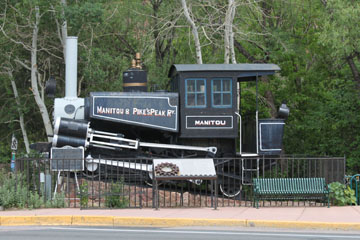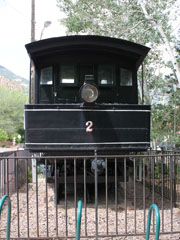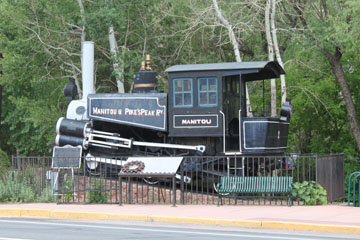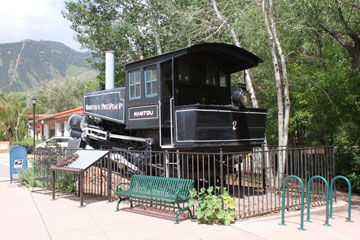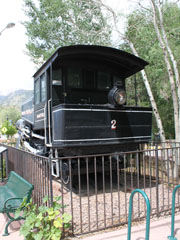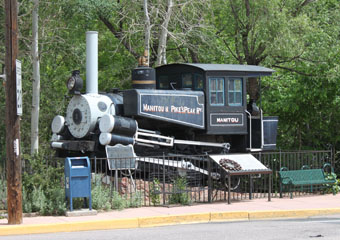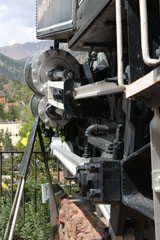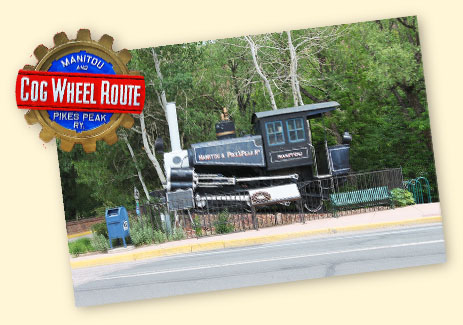

Manitou & Pike's Peak #2 is on display on the corner of Manitou Ave and El Paso Blvd in downtown Manitou Springs, CO. It was one of three locomotives built in 1890 by Burnham, Williams & Co., an early incarnation of the Baldwin Locomotive Works, to run from Manitou Springs, CO, up to scenic lookouts on Manitou Mountain and Pike’s Peak.
The 8.9 mile standard gauge line to Pike’s Peak was built as a tourist-only line beginning in 1889, with a limited service to the Halfway House Hotel completed by 1890, and the 14,110 foot summit was reached the following year. The Manitou Incline was built in 1907 to construct city water lines and a hydro-electric plant, after which, the M&PP took it over as a funicular incline. The lower terminus was next to the Cog Railway station in Manitou Springs, but the line was closed by a rock slide in 1990 and has not reopened.
During the 1930s the M&PP began investing in new motive power. In 1938, it built a twenty-four passenger, 175 hp gas-powered “Streamliner”, #7, at its workshops. This worked well and GE was then contracted in 1939 to build #8, the first of five diesel-electric cog locomotives (#8-#12) delivered between 1939 and 1956 that progressively replaced the steam engines.
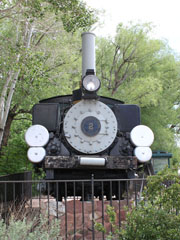
#2 started life as a
simple expansion locomotive named “Manitou” and then
“T. F. Richardson”.
Like the other two engines, it had two forward axles rigidly fastened to the frame and a rear axle fitted with a radius bar. An inside frame fastened to the forward axles carried three double pinions, or cog wheels, cut from a solid disc of hammered crucible steel with a tensile strength of 100,000 psi. The canted 17” x 20” cylinders transmitted power to a main drum with teeth to drive the two rear cog wheels. The forward cog wheel was connected by side rods.
#5 was delivered in 1901 and #6 in 1906. Both were also Vauclain compounds built by Burnham, Williams & Co., and completed the M&PP’s roster of steam locomotives.
Built as an oil burner, #6 was converted to burn coal in 1907 because of poor steaming.
In 1893, a fourth engine, #4 arrived, built as a Vauclain compound also by Burnham, Williams & Co., but without the first three locomotives' inside frame and main drum. Instead, power was delivered by rocking beams and cranks from the 9” x 15” x 22” cylinders to cogs fastened to the axles of the two drive wheels.
#4 proved so successful in operation that the original three were sent back to Philadelphia for conversion. On their return, the “T. F. Richardson” was numbered #2. The other locomotives, “John Hurlburt” and “Pike’s Peak”, were respectively numbered #1 and #3
The braking system used the cylinders of the engine to compress air while descending the mountain, with the valve gear reversed. The engine also had a steam brake controlled by the engineer, which worked on corrugated collars on the rear pinions.
#2 continued working on the grade until 1940, when it was donated to the city of Manitou Springs. Three other M&PP compounds have survived. You can see #1 on the Colorado Railroad Museum page of this website. #4 is still operational and steamed at the railroad’s centennial in 1991. It is in storage at the railway’s depot with #5.
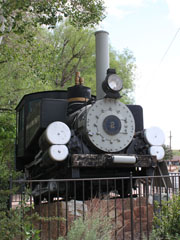
Above, the valve cylinders are set on each side between the two main cylinders and the smokebox.
The main advantage of compounding was lower fuel and water consumption and, for a few years, the Vauclain was a popular choice for mainline railroads. However, it required careful balancing, produced uneven forces and, over time, excess wear at the crosshead, and increased maintenance costs largely offset any fuel economies. As a result, Vauclains were soon simpled or scrapped and the M&PP engines are the sole survivors of this type in the US.

Above, the rack system invented by the Swiss engineer Roman Abt was used. It consists of two side by side steel racks with alternating upward pointing teeth that mesh with the locomotive's drive pinions on the two 22½” front drive wheels. The rack and cogs are offset so that one tooth is always meshed at a time.
A coal burner, #2 weighs 52,680 lbs and operated at a boiler pressure of 180 psi. The locomotives’ boilers were inclined relative to the wheelbase to keep them level on the average 16% grades.
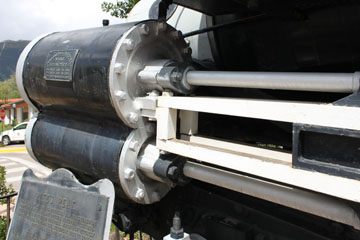
Related Links:
Location Manitou & Pike's Peak #2
Send a comment or query, or request permission to re-use an image.
A short film of Pikes Peak Cog Railway in 1936 with a brief section showing then owner, Spencer Penrose, has been posted by pikespeaklibrary on youtube:
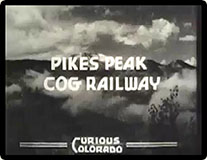
Two films showing #4 in operation have also been posted, No.4 Lives Again! by jointlinerailfan, filmed in 2010, and Steam on the Mountain 1991-1992 by gothpapa:



